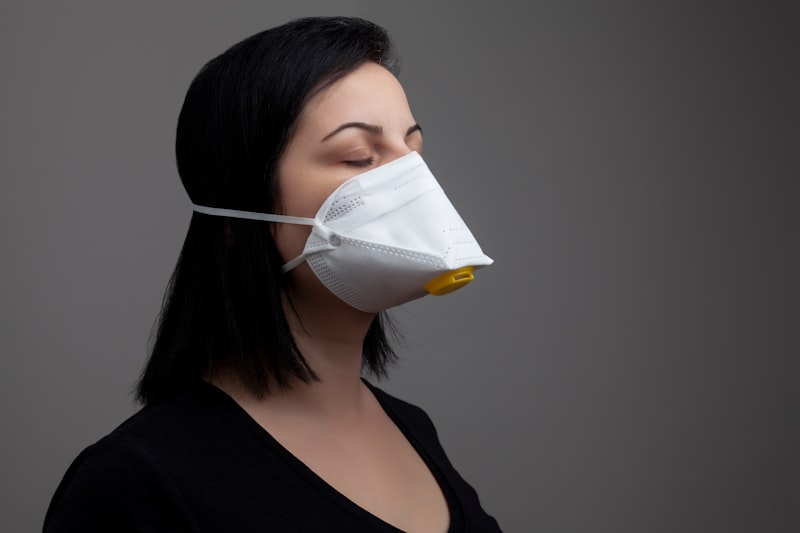Looking to boost your lung capacity and improve your breathing? Yoga might just be the perfect practice for you. Yoga isn’t just about striking poses; it’s a holistic approach that combines breathing exercises, known as pranayama, with physical postures to enhance your overall well-being.
One of the key benefits of yoga is its ability to improve respiratory function. Through specific breathing techniques practiced during yoga sessions, you can learn to deepen your breath, increase lung capacity, and promote better oxygen circulation throughout your body. This is particularly beneficial for those with respiratory conditions or anyone looking to optimize their lung health.
Imagine each breath as a revitalizing force, filling your lungs with fresh oxygen and releasing tension with every exhale. Yoga encourages mindful breathing, where each inhale is deliberate and each exhale is purposeful. This mindful approach not only enhances lung efficiency but also calms the mind, reducing stress and promoting relaxation.
Incorporating yoga into your routine doesn’t require hours of practice each day. Even dedicating a few minutes to simple pranayama exercises like deep belly breathing or alternate nostril breathing can make a significant difference over time. These exercises help clear the airways, expand lung capacity, and improve respiratory muscle strength.

Think of yoga as a journey towards better breathing. It’s a practice that adapts to your pace and needs, whether you’re a beginner or seasoned yogi. With regular practice, you’ll notice improved stamina, reduced breathlessness during physical activities, and a greater sense of well-being overall.
Ready to take the first step towards enhancing your lung capacity and breathing efficiency? Explore the world of yoga and discover how simple breathing exercises can transform your health from the inside out.
Unlocking Respiratory Wellness: How Yoga Enhances Lung Capacity
Central to yoga’s efficacy in bolstering respiratory health is pranayama, which teaches conscious control over breathing. Techniques like deep abdominal breathing, alternate nostril breathing, and kapalabhati involve deliberate inhalation and exhalation patterns. These practices not only optimize oxygen intake but also strengthen the diaphragm and intercostal muscles, vital for respiratory efficiency.
Moreover, yoga postures play a pivotal role. Asanas such as Bhujangasana (Cobra Pose) and Dhanurasana (Bow Pose) expand the chest cavity, enhancing lung capacity over time. Regular practice gradually improves lung elasticity, facilitating deeper and more controlled breathing. This process aids in clearing toxins and increasing oxygen supply to the body’s cells, fostering overall vitality.
Beyond physical benefits, yoga cultivates mindfulness, reducing stress and anxiety that can constrict breathing. The mind-body connection nurtured by yoga encourages relaxation, which in turn promotes optimal respiratory function. Like a gentle breeze clearing the air, yoga empowers individuals to breathe more freely, enhancing their well-being from within.
In essence, yoga offers a comprehensive approach to unlocking respiratory wellness. By integrating pranayama techniques and asanas into your routine, you embark on a transformative journey towards stronger lungs and enhanced vitality. Embrace the breath, harness its power through yoga, and experience the profound benefits of enriched respiratory health.
Breath of Life: Yoga’s Impact on Improved Breathing
Central to yoga’s philosophy is the belief that breath is life. Through controlled breathing exercises like pranayama, practitioners learn to harness the power of their breath to enhance vitality and well-being. Imagine your breath as a gentle wave, ebbing and flowing with each inhale and exhale, synchronizing with the rhythm of your body’s movements. This harmony fosters a deep sense of calm and clarity, essential for managing stress and anxiety in our hectic lives.
In yoga, the breath acts as a bridge between the mind and body. By consciously regulating the breath, practitioners stimulate the parasympathetic nervous system, triggering a relaxation response that counters the effects of chronic stress. This not only improves lung capacity and oxygen uptake but also enhances overall respiratory efficiency. It’s akin to training your lungs to expand fully, like a balloon inflating with each breath, thereby boosting respiratory endurance and stamina.
Furthermore, yoga encourages mindfulness—a state where one remains fully present in the moment. This mindfulness extends to our breathing patterns, where we learn to observe the quality of our breath without judgment. Are we breathing shallowly or deeply? Is our breath calm or hurried? These observations guide us towards correcting poor breathing habits, promoting healthier lung function over time.
In essence, the impact of yoga on improved breathing goes beyond physical exercise; it cultivates a holistic approach to respiratory health. Just as a sail catches the wind’s breath to propel a boat forward, yoga empowers us to harness the breath of life, nurturing our lungs, and revitalizing our body’s natural rhythms. Through regular practice, one not only strengthens the respiratory muscles but also finds renewed energy and vitality in every breath taken.
Deep Breaths, Strong Lungs: Yoga Techniques for Respiratory Health
Breathing is more than just an involuntary action; it’s a pathway to better health, especially when enhanced through the mindful practice of yoga. In today’s fast-paced world, where stress and pollution take a toll on our respiratory systems, incorporating yoga techniques can significantly bolster lung capacity and overall respiratory health.

Yoga, known for its holistic approach to wellness, offers a variety of techniques specifically designed to improve lung function and strengthen respiratory muscles. One such technique is diaphragmatic breathing, often referred to as “belly breathing.” This method involves deep inhalations that expand the diaphragm downward, allowing the lungs to fill completely with air. By regularly practicing diaphragmatic breathing, individuals can increase oxygen intake, which is vital for energy production and overall vitality.

Another effective yoga technique for respiratory health is pranayama, which focuses on breath control. Pranayama exercises, such as Kapalabhati (skull-shining breath) and Nadi Shodhana (alternate nostril breathing), not only cleanse the respiratory passages but also calm the mind, reducing stress levels that can constrict airways.
Yoga postures, or asanas, also play a crucial role in enhancing lung capacity. Poses like Bhujangasana (cobra pose) and Dhanurasana (bow pose) open up the chest and stretch the lungs, improving their elasticity and efficiency. These asanas not only strengthen respiratory muscles but also promote better circulation, ensuring that oxygen reaches every cell in the body.
Incorporating these yoga techniques into your daily routine can yield profound benefits for respiratory health. Whether you’re combating the effects of pollution, recovering from respiratory illnesses, or simply aiming to enhance your overall well-being, yoga offers accessible and effective tools to support lung function and vitality.
By embracing the power of deep, mindful breathing and integrating yoga practices into your lifestyle, you can cultivate strong lungs and enjoy the rejuvenating effects of improved respiratory health. Discover the transformative potential of yoga today and breathe easier tomorrow.
Harnessing the Power of Pranayama: Yoga’s Secret to Enhanced Lung Function
Imagine your breath as the conductor of a grand orchestra, where each inhalation and exhalation plays a vital role in orchestrating the harmony within your body. Pranayama techniques aim to optimize this symphony by manipulating the breath through various patterns and rhythms. From simple deep breathing exercises to more advanced techniques like Kapalabhati and Nadi Shodhana, each method serves a specific purpose in promoting respiratory health.
At its core, Pranayama enhances lung function by increasing lung capacity and efficiency. By consciously deepening and slowing down the breath, practitioners improve oxygen absorption and carbon dioxide elimination, crucial processes for maintaining cellular function and vitality. This not only supports physical endurance but also cultivates mental clarity and emotional balance.
Regular practice of Pranayama fosters a deeper connection between mind and body. It acts as a powerful stress-relieving tool, calming the nervous system and reducing the harmful effects of chronic stress on respiratory function. As you delve into these breathing exercises, you begin to tap into a reservoir of inner peace and vitality, enriching your life with each mindful breath.
In today’s fast-paced world, where air pollution and sedentary lifestyles pose challenges to respiratory health, the ancient wisdom of Pranayama offers a beacon of hope. It empowers individuals to take charge of their well-being proactively, offering a natural and sustainable way to strengthen lung function and enhance overall vitality. So, whether you’re a seasoned yogi or a beginner on this transformative journey, exploring the power of Pranayama can be your gateway to a healthier, more balanced life.
Frequently Asked Questions
How often should I practice yoga for improved lung function
Discover how often to practice yoga for enhanced lung function with our concise guide. Find out the optimal frequency that supports respiratory health and overall well-being.
What breathing techniques are beneficial in yoga
Discover effective breathing techniques for yoga that enhance relaxation and focus. Learn methods like diaphragmatic breathing and Ujjayi pranayama to deepen your practice and promote mindfulness.
What are the best yoga poses for better breathing
Discover effective yoga poses that enhance breathing. Learn how these poses, such as Sukhasana (Easy Pose) and Bhujangasana (Cobra Pose), can improve lung capacity and overall respiratory function.
How can yoga improve lung capacity
Learn how yoga enhances lung capacity through specific breathing techniques and poses that strengthen respiratory muscles, increase lung efficiency, and promote deeper breathing patterns.
Can yoga help with respiratory health
Discover how yoga can positively impact respiratory health through specific breathing exercises and postures that promote lung capacity, oxygen flow, and overall respiratory function. Learn about the holistic benefits of integrating yoga into your wellness routine to support better breathing and enhance overall respiratory well-being.



